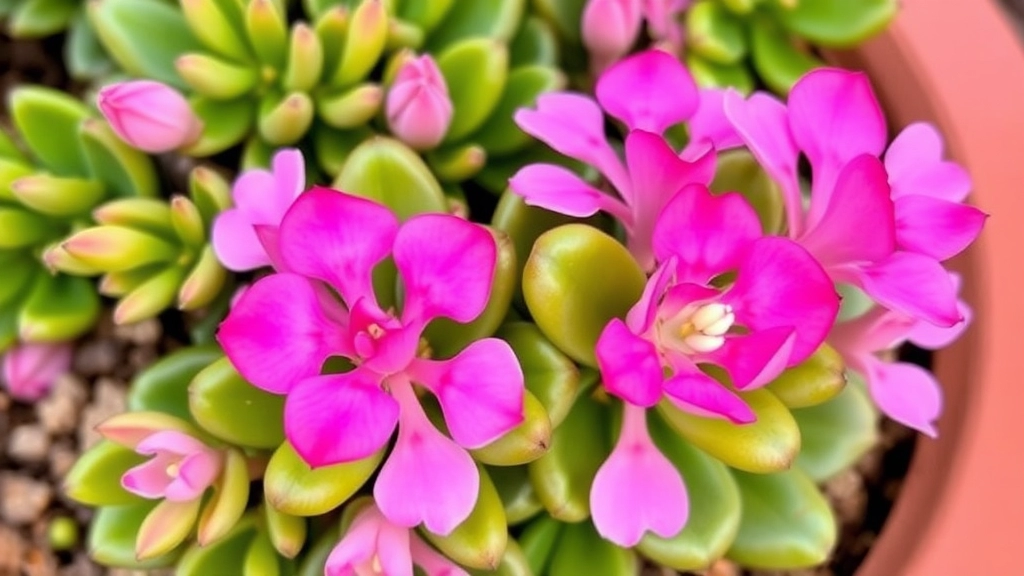Mastering the Care of Your Kalanchoe Humilis
Looking to master the care of your Kalanchoe Humilis succulent? This unique plant, known for its striking foliage and easy maintenance, can thrive with the right care. In this guide, I’ll share essential tips on growing conditions, watering, and propagation to help your Kalanchoe Humilis flourish.
Understanding Kalanchoe Humilis
Understanding the characteristics of Kalanchoe Humilis is key to providing optimal care. This succulent prefers bright, indirect light and well-draining soil. Overwatering is a common mistake, so it’s crucial to let the soil dry out between waterings. Ready to dive deeper? Let’s explore each aspect to ensure your Kalanchoe Humilis remains healthy and vibrant.
When considering the ideal succulent for your collection, you may find yourself wondering about Kalanchoe Humilis.
This captivating plant, known for its unique features, stands out in the world of succulents.
### Distinctive Features
– **Leaf Structure**: Kalanchoe Humilis has thick, fleshy leaves that are often greyish-green in colour. These leaves are not only visually appealing but also serve as water reservoirs, making the plant drought-resistant. For more information on similar leaf structures, check out the [Kalanchoe Leaf Problems: Causes, Solutions, and Prevention](https://planthq.org/kalanchoe-leaf-problems-causes-solutions-and-prevention/) guide.
– **Growth Habit**: This succulent tends to grow low to the ground, forming a rosette shape that can reach up to 30 cm in height. Its compact form makes it an excellent choice for small spaces or as a ground cover.
– **Flowers**: During its blooming season, Kalanchoe Humilis produces clusters of small, tubular flowers that can vary in colour, typically showcasing shades of yellow or orange. These flowers attract pollinators, adding an extra layer of life to your garden. If you are interested in other Kalanchoe varieties with vibrant flowers, you might find the [Vibrant Kalanchoe Blossfeldiana Colors: A Complete Guide](https://planthq.org/vibrant-kalanchoe-blossfeldiana-colors-a-complete-guide/) useful.
– **Adaptability**: One of the most remarkable characteristics of Kalanchoe Humilis is its ability to thrive in various conditions. Whether indoors or outdoors, this succulent can adapt to different light levels and temperatures.
Ideal Growing Conditions for Kalanchoe Humilis
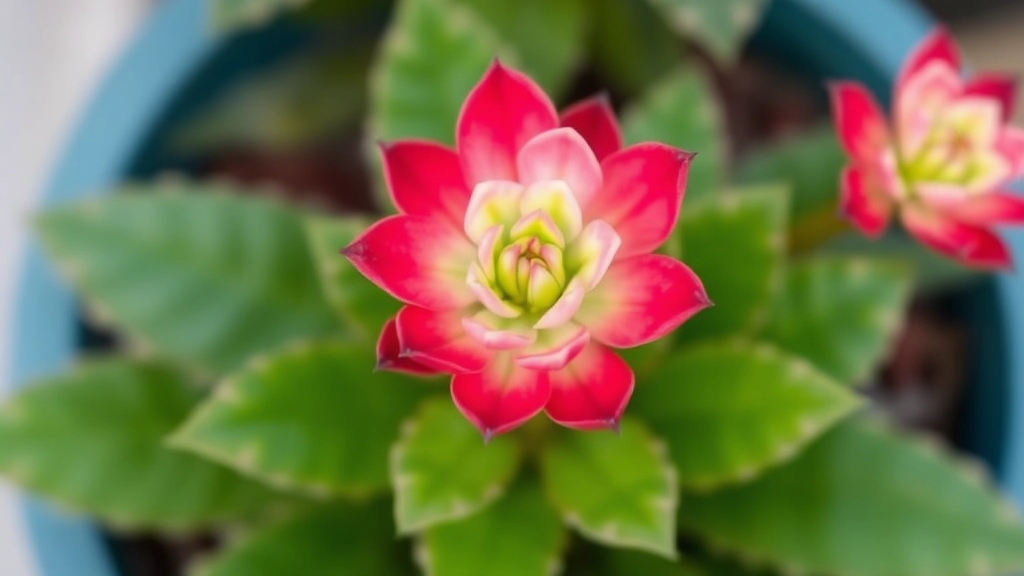
So, you’ve got your Kalanchoe Humilis and you’re wondering where to put it, right?
Getting the perfect spot for this succulent is key to its happiness and growth.
Light Requirements
- Bright, Indirect Light: Kalanchoe Humilis thrives in bright, indirect sunlight.
- Avoid Harsh Sun: Direct midday sun can scorch its leaves.
Temperature Preferences
- Warm Temperatures: Ideally, keep it between 20°C to 25°C (68°F to 77°F).
- Cool Nights: It can tolerate cooler nights, but avoid temperatures below 10°C (50°F).
Humidity Levels
- Low Humidity: This plant prefers dry conditions, making it perfect for indoor environments.
- Good Air Circulation: Ensure good airflow around the plant to prevent mold and rot.
Indoor vs. Outdoor
- Indoor: If you’re keeping it inside, a south-facing window works wonders.
- Outdoor: If you’re in a warmer climate, it can be placed outdoors, but be mindful of the sun exposure.
Watering Requirements and Common Mistakes
When it comes to caring for Kalanchoe Humilis, watering is often a major concern for many plant enthusiasts.
How much water is too much?
Kalanchoe Humilis thrives in well-draining conditions, and improper watering can lead to root rot, a common issue for succulent lovers.
Watering Guidelines:
- Frequency: Water your Kalanchoe Humilis every 2-3 weeks during the growing season (spring and summer).
- Check the Soil: Always ensure the top inch of soil is dry before watering again.
- Watering Technique: Water deeply but infrequently. Allow the water to drain out of the pot’s bottom.
Common Mistakes to Avoid:
- Overwatering: This is the most frequent error. Signs include yellowing leaves or a mushy stem. For more detailed solutions, check out why your Kalanchoe leaves are turning brown.
- Underwatering: While Kalanchoe Humilis is drought-tolerant, prolonged dryness can lead to shrivelled leaves. Learn more about why your Kalanchoe leaves might be dying and how to fix it.
- Water Quality: Use room-temperature, non-chlorinated water. Rainwater or distilled water is ideal.
Soil and Potting Tips for Kalanchoe Humilis
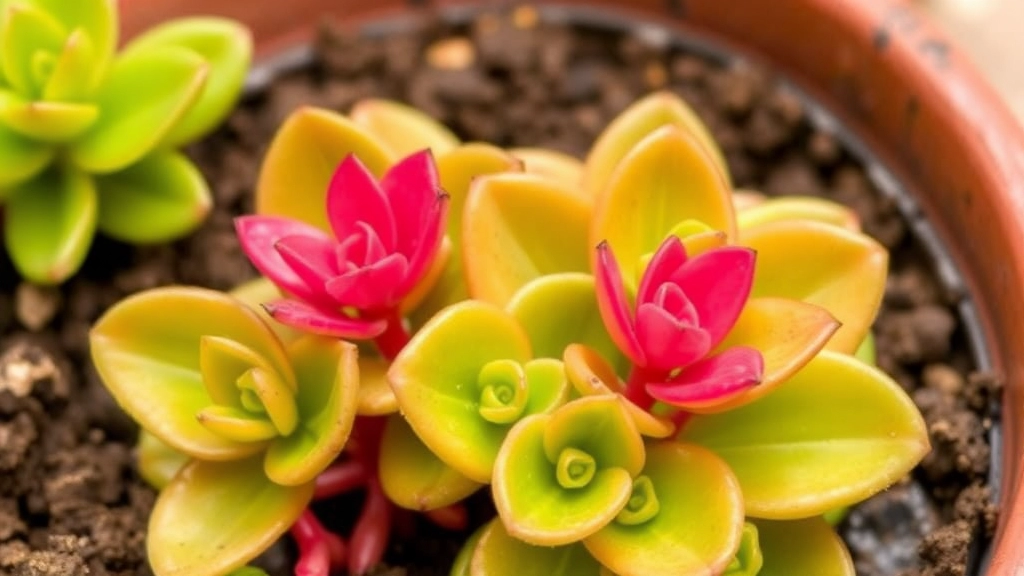
When it comes to ensuring your Kalanchoe Humilis thrives, the right soil and potting techniques are crucial. Many plant enthusiasts often wonder what type of soil is best for their succulent, and how they can pot it effectively to promote healthy growth.
Ideal Soil Composition
Kalanchoe Humilis requires well-draining soil to prevent root rot, which is a common issue with succulents. Here are some key components to consider:
- Cactus Mix: A pre-made cactus or succulent mix is often ideal, as it offers excellent drainage.
- Perlite or Pumice: Adding perlite or pumice can enhance aeration and drainage further. Aim for a mix that is around 50% cactus mix and 50% perlite.
- Organic Matter: A small amount of organic matter, such as compost, can provide essential nutrients without compromising drainage.
Potting Tips
Choosing the right pot is just as important as selecting the right soil. Here are some tips for potting your Kalanchoe Humilis:
- Drainage Holes: Always opt for pots with drainage holes. This prevents excess water from accumulating at the bottom.
- Size Matters: A pot that is slightly larger than the root ball is ideal. This allows for growth without overwhelming the plant with too much soil.
- Terracotta Pots: Consider using terracotta pots, as they are porous and help wick moisture away from the roots.
Repotting Considerations
As your Kalanchoe Humilis grows, you may need to repot it. Here’s when and how to do it:
- Timing: Early spring is the best time for repotting, just before the active growing season.
- Gentle Handling: Carefully remove the plant from its pot, loosening any tightly bound roots.
- Fresh Soil: Use fresh soil to provide nutrients and ensure good drainage.
How to Propagate Kalanchoe Humilis
If you’re eager to expand your Kalanchoe Humilis collection, you might be wondering about the best ways to propagate this delightful succulent. Propagation can seem daunting, but with a few straightforward techniques, you’ll be on your way to nurturing new plants in no time.
Methods of Propagation
- Leaf Cuttings
- Select a Healthy Leaf: Look for a mature, healthy leaf on your Kalanchoe Humilis.
- Cut Carefully: Use a clean, sharp knife or scissors to snip the leaf at the base.
- Allow to Callus: Place the leaf in a dry, shaded area for a few days until the cut end calluses over. This helps prevent rot.
- Planting: After the callusing period, place the leaf on top of well-draining soil and lightly press it down. Water sparingly until roots develop.
- Offsets
- Identify Offsets: Check for small offsets (baby plants) growing at the base of the parent plant.
- Remove Gently: Use a clean knife to detach the offset from the main plant, ensuring some roots are included.
- Replant: Place the offset in a pot with well-draining soil and water lightly.
- Stem Cuttings
- Choose a Stem: Select a healthy stem with a few leaves.
- Cut and Callus: Similar to leaf cuttings, cut the stem and allow it to callus for a few days.
- Planting: Insert the callused end into soil and water sparingly until roots form.
Tips for Successful Propagation
- Use Well-Draining Soil: A cactus or succulent mix works best. For more detailed guidance, check out our care guide for succulent plant Kalanchoe.
- Provide Adequate Light: Position your cuttings in a bright, indirect light area. Learn more about optimal light conditions in our optimal growing guide for Kalanchoe.
- Maintain Humidity: Covering the cuttings with a plastic bag can help retain moisture, but ensure there’s airflow to prevent rot.
Fertilizing During Active Growth
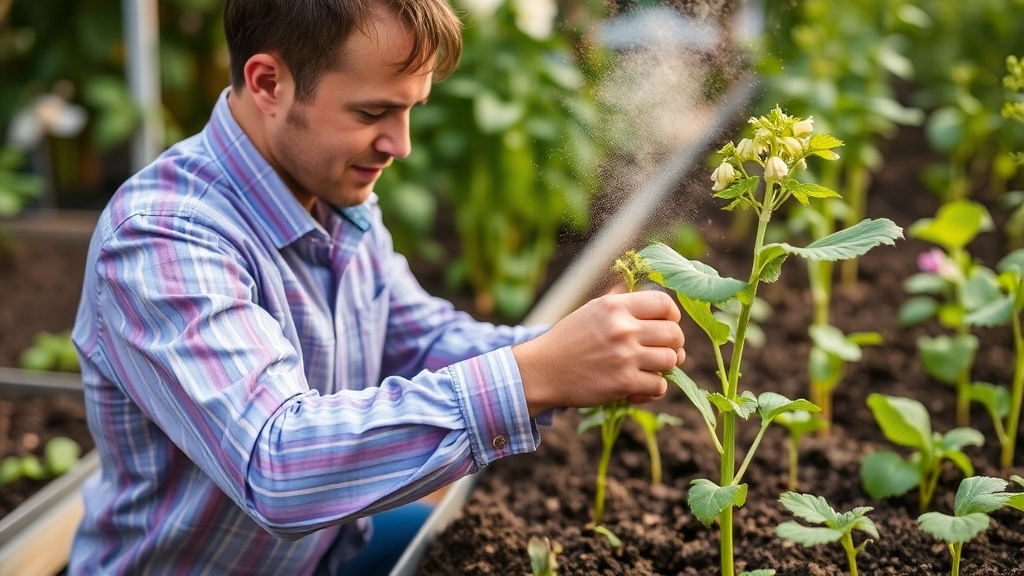
So, you’re ready to give your Kalanchoe Humilis a little boost during its growing season? That’s fantastic! Fertilizing can really help your plant thrive, but it’s easy to get it wrong.
When to Fertilize
- Timing is everything. Fertilize during the active growth phase, which typically runs from spring to early autumn. This is when your Kalanchoe is most hungry for nutrients.
- Frequency matters. Aim for every 4-6 weeks. Too much can do more harm than good.
What to Use
- Choose a balanced, water-soluble fertilizer. A 10-10-10 or similar ratio works wonders.
- Dilution is key. Always dilute it to half the recommended strength. Your Kalanchoe will appreciate the gentle nudge rather than a full-on feast.
Application Tips
- Water before you fertilize. This helps prevent root burn.
- Apply to moist soil. It’s best to fertilize when the soil is damp, not soaked.
- Avoid the leaves. Fertilizing the leaves can lead to burns and spots. Stick to the soil!
Common Mistakes to Avoid
- Over-fertilizing. This can lead to leggy growth or even root damage.
- Ignoring the rest period. Once autumn hits, cut back on fertilizing. Your Kalanchoe needs a break!
When caring for Kalanchoe Humilis, one of the most pressing concerns is managing pests and diseases. As a succulent, this plant is relatively resilient, but it is not immune to common issues that can affect its health.
### Common Pests
– **Mealybugs**: These small, white insects can cluster on the leaves and stems. They suck sap, weakening the plant.
– **Spider Mites**: Tiny and often unnoticed, these pests create webbing and cause leaf discoloration.
– **Aphids**: These small green insects can also suck sap, leading to stunted growth.
### Signs of Infestation
– Yellowing leaves
– Stunted growth
– Sticky residue on leaves (honeydew)
### Treatment Options
– **Manual Removal**: Gently wipe pests off with a damp cloth or use a cotton swab dipped in rubbing alcohol.
– **Insecticidal Soap**: Apply this solution to affected areas, ensuring thorough coverage.
– **Neem Oil**: A natural remedy that can deter pests while being safe for the plant.
For more detailed care tips, you might find our [comprehensive guide on Kalanchoe Panda Plant care](https://planthq.org/kalanchoe-panda-plant-care-comprehensive-guide-tips/) useful.
### Common Diseases
– **Root Rot**: Often caused by overwatering, leading to mushy roots and eventual plant death.
– **Powdery Mildew**: A fungal issue that appears as a white powder on leaves, often due to high humidity.
### Prevention Strategies
– **Proper Watering**: Ensure the soil dries out between waterings to prevent root rot.
– **Good Air Circulation**: Place your Kalanchoe in a spot with adequate airflow to reduce humidity.
– **Regular Inspections**: Check the plant frequently for any signs of pests or disease.
If you’re dealing with specific issues like drooping leaves, our guide on [how to fix drooping Kalanchoe leaves](https://planthq.org/how-to-fix-drooping-kalanchoe-leaves-causes-and-solutions/) provides valuable insights.
Seasonal Care: Dormancy and Temperature Management
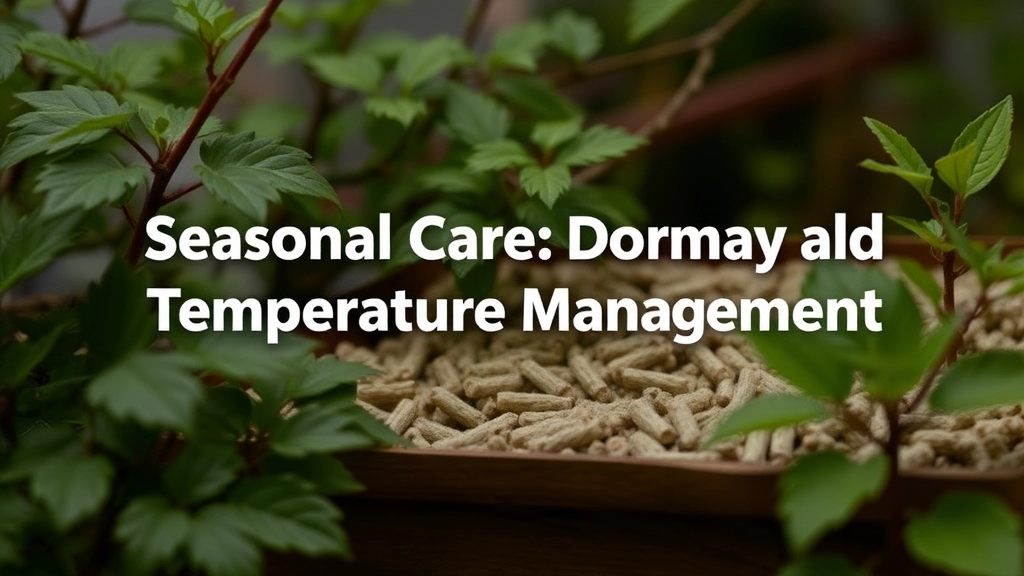
So, you’ve got your Kalanchoe Humilis thriving, but what happens when the seasons change?
This succulent goes through a dormancy period, usually in winter. During this time, it slows down its growth and needs a bit of extra TLC to stay healthy.
Here’s what you need to know:
- Temperature Control:
- Kalanchoe Humilis prefers temperatures between 15°C to 25°C (59°F to 77°F).
- In winter, keep it above 10°C (50°F). Anything lower can stress your plant.
- Light Requirements:
- Even in dormancy, it still needs bright, indirect light.
- If you notice it stretching towards the light, it might not be getting enough.
- Watering Adjustments:
- Cut back on watering during dormancy.
- Check the soil moisture; only water when the top inch is dry.
- Humidity Levels:
- This plant loves dry air, so don’t worry about humidity.
- Avoid placing it near drafts or heating vents.
- Signs of Stress:
- Yellowing leaves? That could mean it’s too cold or overwatered.
- Droopy leaves? It might be thirsty or lacking light.
By managing these factors, you’ll help your Kalanchoe Humilis weather the winter months like a champ.
Troubleshooting: Common Problems and Solutions for Kalanchoe Humilis
As we explore the care of Kalanchoe Humilis, it’s essential to address potential issues that may arise. Understanding how to troubleshoot common problems ensures your plant thrives in your care.
1. Leaf Discoloration
Symptoms:
- Yellowing leaves
- Brown tips
Causes:
- Overwatering
- Nutrient deficiency
Solutions:
- Check the soil moisture; allow it to dry out between waterings.
- Consider fertilising with a balanced, water-soluble fertiliser.
2. Wilting or Drooping Leaves
Symptoms:
- Leaves appear limp
- Stems lose firmness
Causes:
- Underwatering
- Extreme temperatures
Solutions:
- Water the plant thoroughly, ensuring excess water drains away.
- Keep the plant in a stable environment, avoiding drafts and extreme heat.
3. Stunted Growth
Symptoms:
- Minimal new growth
- Small leaves
Causes:
- Poor lighting
- Inadequate nutrients
Solutions:
- Move your plant to a brighter location with indirect sunlight.
- Fertilise during the growing season to provide essential nutrients.
4. Pest Infestations
Common Pests:
- Mealybugs
- Aphids
Symptoms:
- Sticky residue on leaves
- Visible pests
Solutions:
- Wipe leaves with a damp cloth to remove pests.
- Use insecticidal soap or neem oil for severe infestations.
5. Root Rot
Symptoms:
- Foul smell from the soil
- Mushy roots
Causes:
- Overwatering
- Poor drainage
Solutions:
FAQs on Kalanchoe Humilis Succulent
What are the ideal light conditions for Kalanchoe Humilis?
Kalanchoe Humilis thrives in bright, indirect sunlight. Avoid exposing it to direct midday sun, which can scorch its leaves.
What temperature range is best for Kalanchoe Humilis?
The ideal temperature range is between 20°C to 25°C (68°F to 77°F). It can tolerate cooler nights but should be kept above 10°C (50°F).
Does Kalanchoe Humilis need high humidity?
No, this plant prefers low humidity and dry conditions, making it perfect for indoor environments. Ensure good air circulation to prevent mold and rot.
Can Kalanchoe Humilis be grown indoors?
Yes, it can be grown indoors. A south-facing window is ideal for providing the necessary light.
What type of soil is best for Kalanchoe Humilis?
Well-draining soil is crucial. A cactus or succulent mix combined with perlite or pumice for added aeration and drainage works best.
What kind of pot should I use for Kalanchoe Humilis?
Choose pots with drainage holes to prevent water accumulation. Terracotta pots are recommended as they are porous and help wick moisture away from the roots.
How often should I repot Kalanchoe Humilis?
Repotting should be done in early spring, just before the active growing season. Use fresh soil and handle the plant gently to avoid damaging the roots.
When should I fertilize Kalanchoe Humilis?
Fertilize during the active growth phase, typically from spring to early autumn. Aim for every 4-6 weeks using a balanced, water-soluble fertilizer diluted to half strength.
How should I care for Kalanchoe Humilis during its dormancy period?
During dormancy, usually in winter, reduce watering and maintain temperatures above 10°C (50°F). Ensure it still receives bright, indirect light and avoid placing it near drafts or heating vents.
What are common signs of stress in Kalanchoe Humilis?
Yellowing leaves could indicate it’s too cold or overwatered, while droopy leaves might mean it’s thirsty or not getting enough light. Adjust care accordingly to address these issues.
References
-
Kalanchoe Humilis Care Guide
-
How to Grow and Care for Kalanchoe Humilis
-
Kalanchoe Humilis: Tips for Growing
